Last Updated on August 16, 2023 by Ctybr67k
Montmartre: a hilltop area, full of history, and with a truly Parisian ambiance; no wonder it’s so popular with tourists. The lovely Sacré Cœur church, silhouetted on the northern city skyline is a constant beckon. And, in the cobbled streets and little squares lies the history of a poor district which gradually gained a reputation for lively entertainment and also became the home of world-famous artists, many of whom arrived here penniless in the late 19th century.
Saint denis and Sacré Cœur


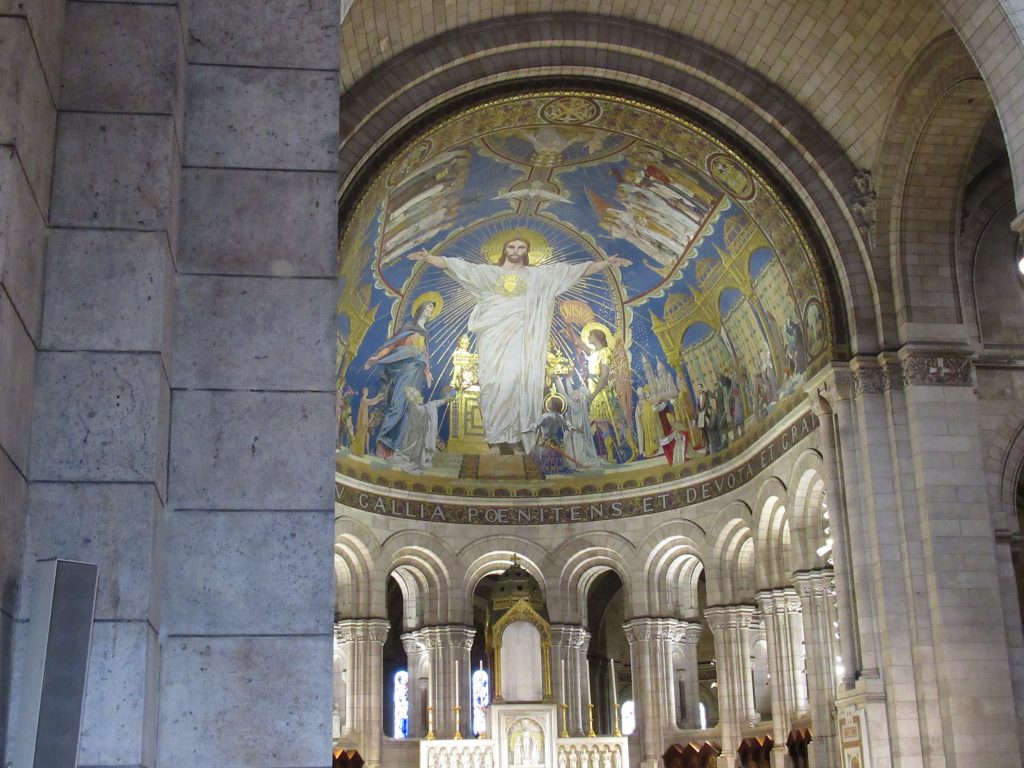
The name Montmartre is a corruption of ‘Mont des Martyrs’, for it was here that Christian martyrs were executed under the Romans, most notably St Denis, the 3rd century bishop who reputedly picked up his decapitated head and walked several miles with it to the site where the Basilique St Denis now stands. That, he explained, was where he would like to be buried and so the cathedral was built to mark the spot. That began the tradition of burying the kings of France there. There is a statue of St Denis in the little Square Suzanne Buisson in Montmartre.
The best-known sight in Montmartre is Sacré Cœur, a church, built as an act of peace after the bloody battles of the Paris Commune. When, in 1871, Parisians revolted against the government, the first barricades went up in the streets of Montmartre. When the uprising had been violently crushed, it was felt by many that a church should be built as a penance. It was financed by public donations, mainly from Catholics, and fervently opposed by radicals, one of whom, ‘Willette’ came to the inauguration expressly to shout ‘Long live the devil’. The little square at the foot of the staircase is named after him … and Montmartre has kept its reputation for radical thinking.
Because it was funded by the public, not the state, there was more freedom to design something non-standard and in fact this church is the only one built of white stone in all of Paris. The highlights of a visit include climbing to the top of the dome, for the best view of Paris you will ever see, and seeing the Savoyarde, at 19 tonnes the largest bell in all of France. Inside, look out for the mosaic of ‘Christ in His Glory’, showing Him dressed in white, arms outstretched, revealing a golden heart and inscribed ‘to the most sacred heart of Jesus, penitent and grateful’.
The Windmills of Montmartre
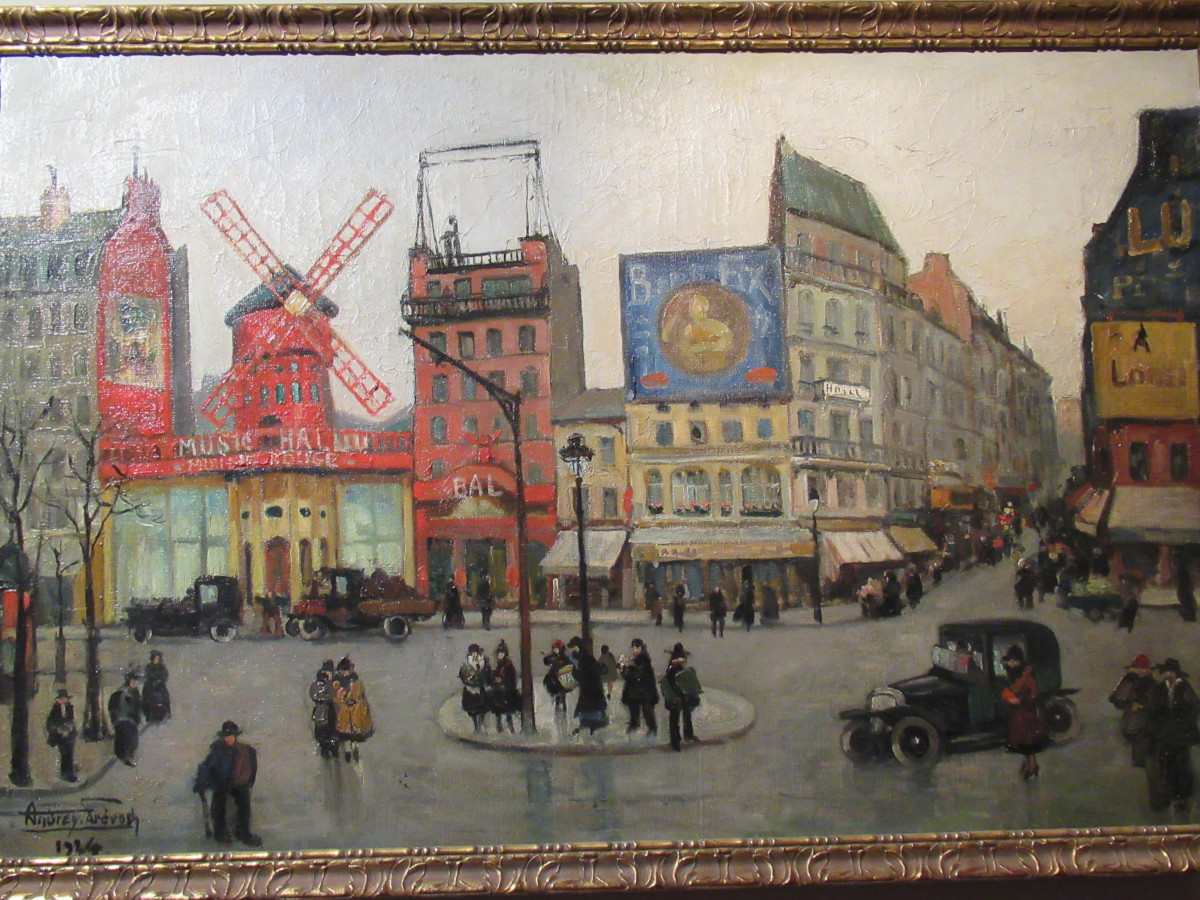
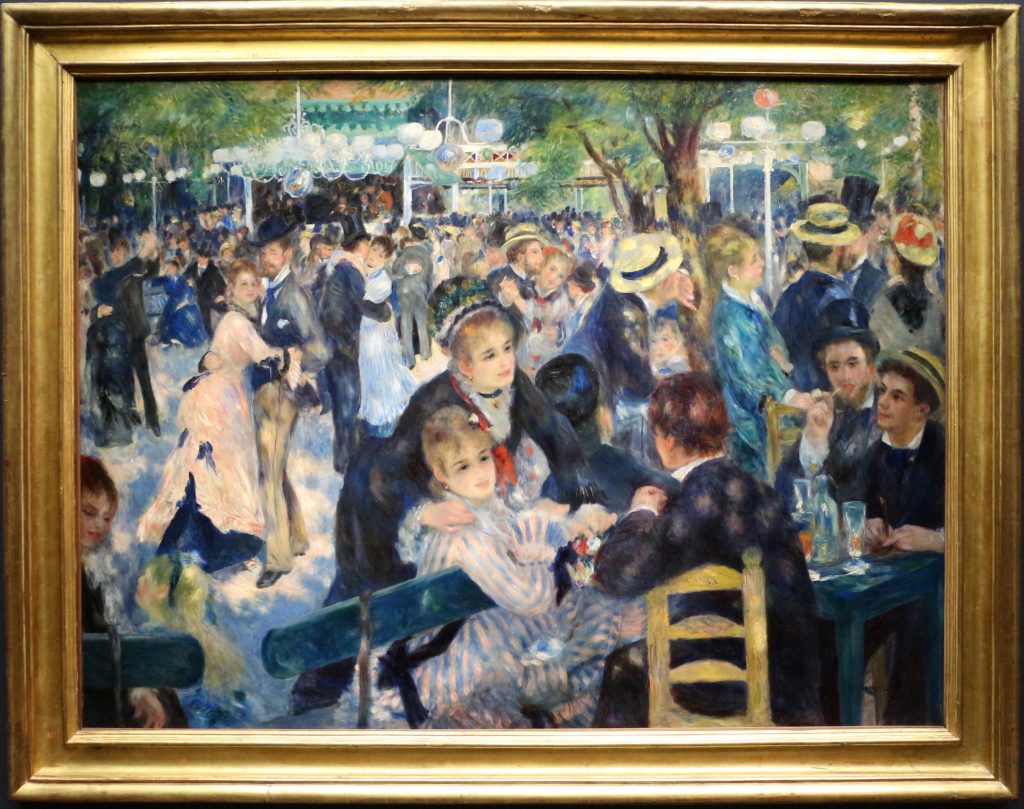
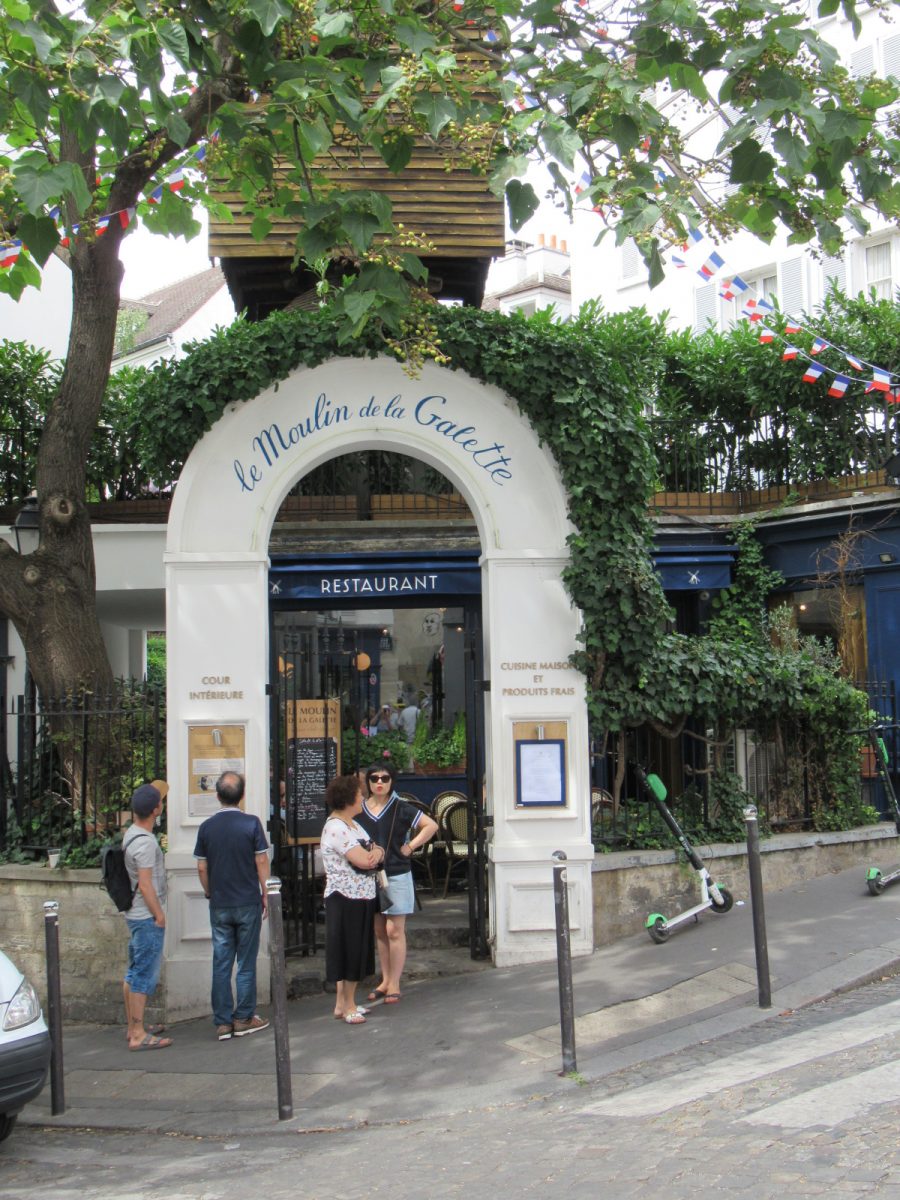
Originally there were some 30 windmills, or ‘moulins’, dotted over Montmartre, used to grind flour for the bakeries of Paris and crush the grapes from the Montmartre vineyard. As they fell out of use and disappeared, one enterprising owner turned his into a ‘guinguette’, a cheerful café with dancing, and named it ‘Le Moulin de la Galette’ because his wife served ‘galettes’. Parisians flocked up there on Sunday afternoons to dance, enjoy pancakes and socialise in scenes like the one painted by Renoir. He captured its convivial, yet respectable atmosphere in the garden setting which can still be seen just off Rue Lepic. At the Moulin de la Galette, the cancan was frowned upon, something which can’t be said of the area’s other famous windmill venue.
Le Moulin Rouge, the Montmartre dance hall, was opened in 1889 in premises especially built to look like a windmill in keeping with its setting. It soon became the best-known of all the Belle Époque dance halls, seen as rather risqué – here the cancan featured heavily! – where the era’s best-known dancers made their sometimes dubious reputations. The most outrageous was La Gouloue, also known as ‘Vide-bouteilles’ for her habit of draining the customers’ drinks. She distributed postcards of herself in raunchy poses as a publicity stunt and once, noticing the visiting Prince of Wales in the front row, promptly flipped his hat off with her foot. Today, the Moulin Rouge offers a full programme of dinner and entertainment.
The Cabarets and artists of Montmartre
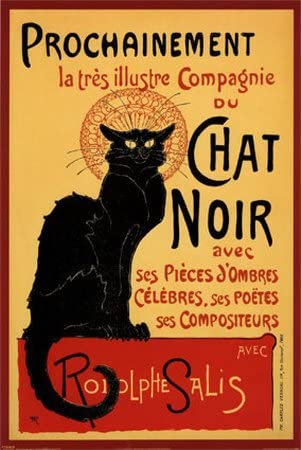
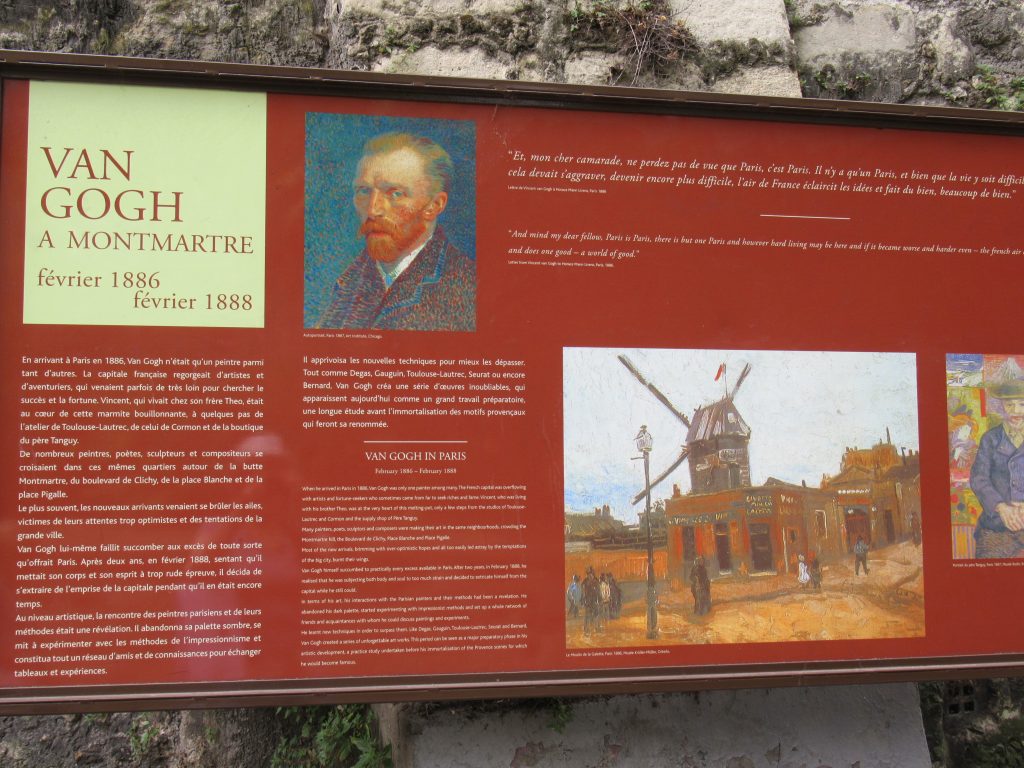
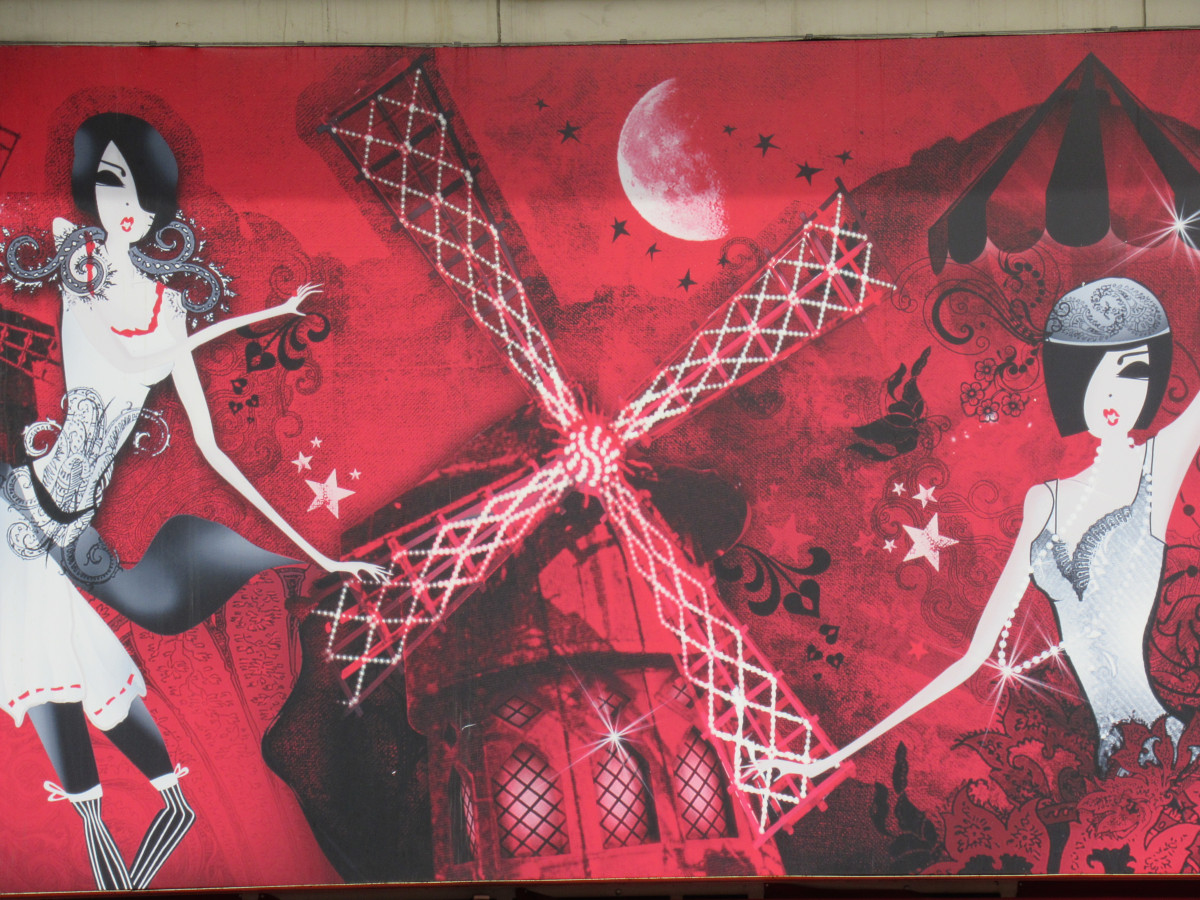
One of the best-known venues, still open today, is the Lapin Agile in the Rue des Saules, next door to the Montmartre Vineyard. Popular from the 1890s, it was frequented by poets like Verlaine and Apollinaire and the painters Modigliani and Picasso. Today you can still visit to enjoy an evening of ‘Chanson, Humour, Poésie’, as promised on the sign outside. Equally famous in its time, although it’s no longer in existence, was Le Chat Noir, an avant-garde cabaret immortalised by Toulouse Lautrec on the well-known posters he designed for ‘the most extraordinary cabaret in the world’. 30 or so guests would squeeze into two small rooms to drink and enjoy what today would be called a variety show.
At the turn of the last century, writes Sue Roe in her book ‘In Montmartre’, ‘this area was populated by ‘small tradesmen, entertainers, petty criminals, prostitutes and artists with varying degrees of talent.’ The list of artists who lived in Montmartre is legendary: Renoir, Van Gogh, Manet, Toulouse Lautrec, Modigliani, Dali, Picasso … to name just some of the most famous. They lived and painted mainly in cheap, ramshackle houses, often with no heating, light or running water. You can still see the Bâteau-Lavoir in Place Émile Goudeau, where Picasso had a studio for a decade or so. To find today’s artists, including some who will paint your portrait, go to Place du Tertre.
The Musée de Montmartre
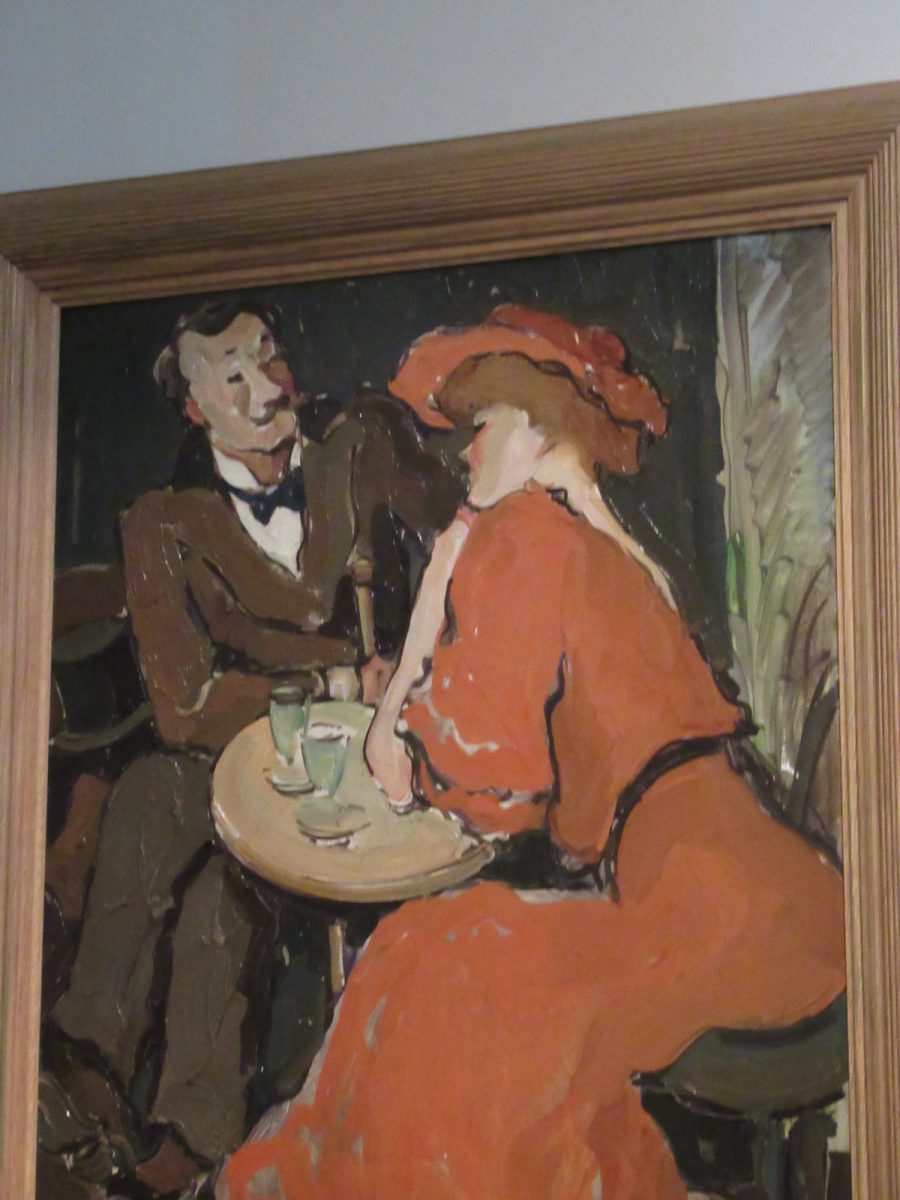

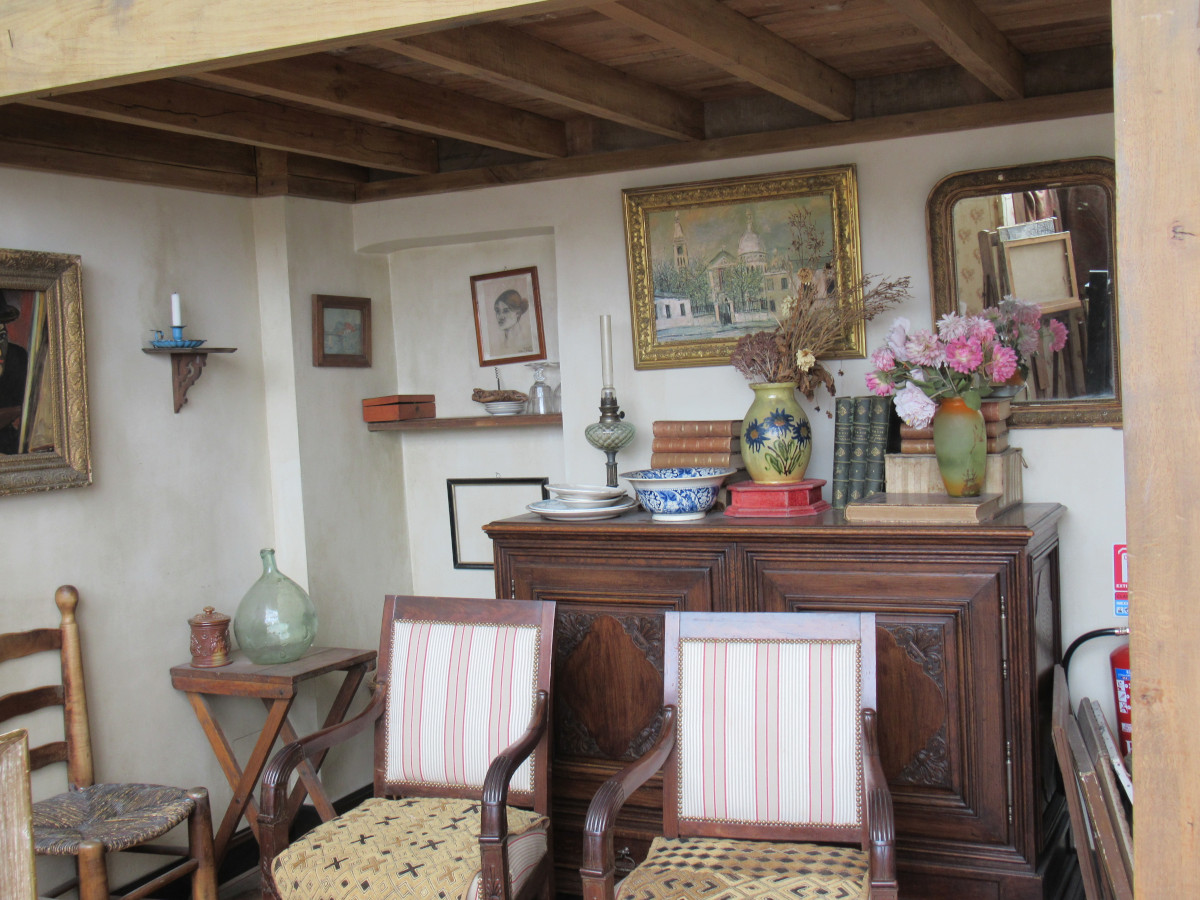
If you make time to stop off at the Musée de Montmartre you’ll get the chance to learn all about the history of the area, especially its artistic heritage. Here you will see photos and sketches of old Montmartre, find out about the area’s most colourful characters – cabaret owner Aristide Bruant and dancer La Goulue for instance – and discover a whole host of paintings and posters from Montmartre’s artistic heyday. There is also a recreation of Suzanne Valadon’s artist’s studio, complete with used paint palettes, lots of finished and half-finished canvases and biographical details about her. Not so well-known today, she began as an artist’s model, but became the first female artist admitted to the prestigious Société des Beaux Arts.
find time to wander …..
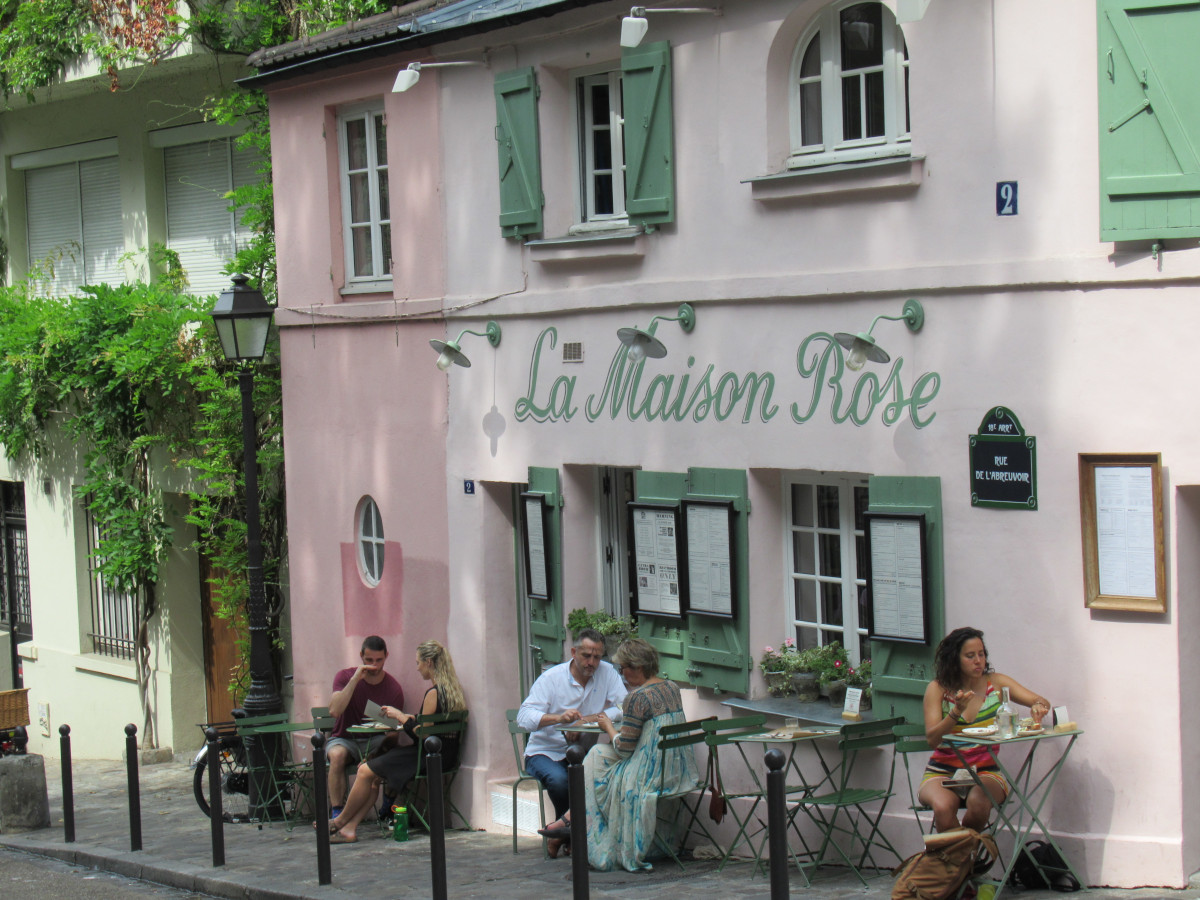
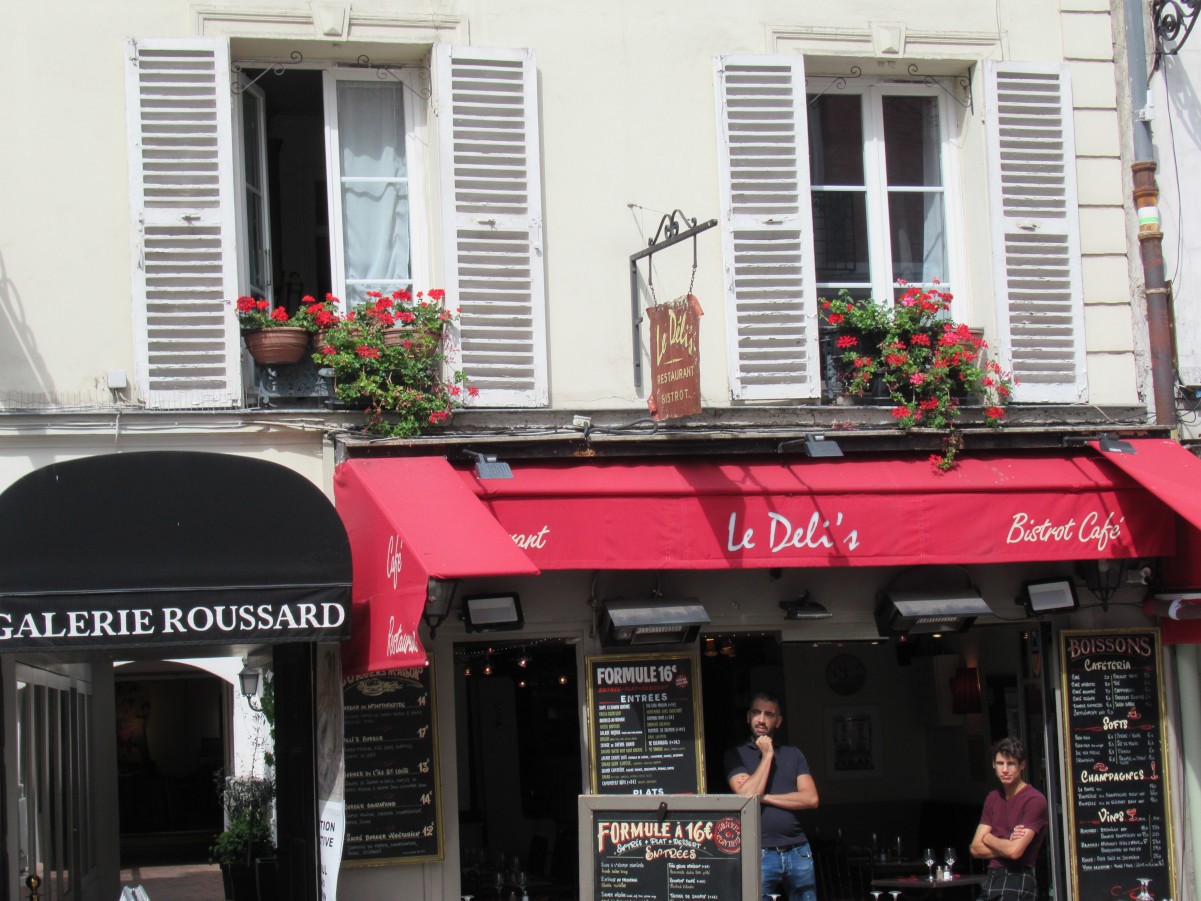
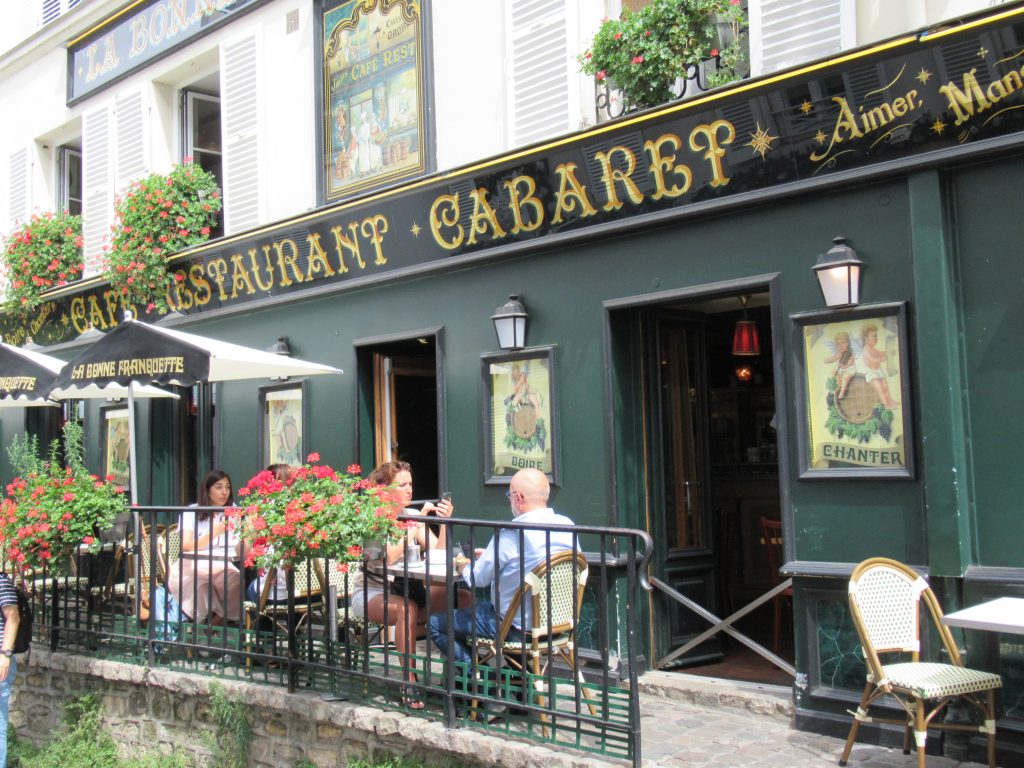
You could spend days in Montmartre without running out of things to do, but if you don’t have time for that, do try to take in the places mentioned and also to allow a little time to just wander. Plan a route along the cobbled streets and through some of the café-lined squares, especially la Place du Tertre. Expect to see lots of red café awnings, to hear a little street music and to be asked if you’d like to buy a souvenir painting or maybe have your portrait painted on the spot. Expect, in short, the Paris you have always imagined!
Listen to the podcast
Reading Suggestions
In Montmartre by Sue Roe
The Only Street in Paris by Elaine Sciolino
Links for this post
Sacré Coeur
Le Moulin Rouge
Le Lapin Agile
Le Musée de Montmartre
Previous Episode Napoleon’s Paris
Next Episode Belle Epoque Paris





